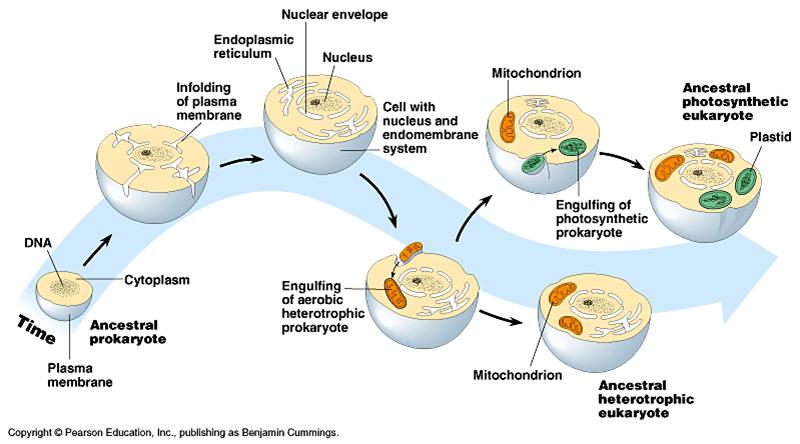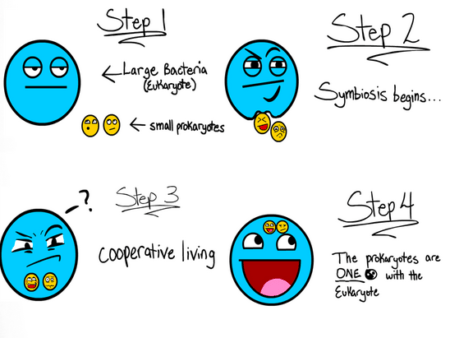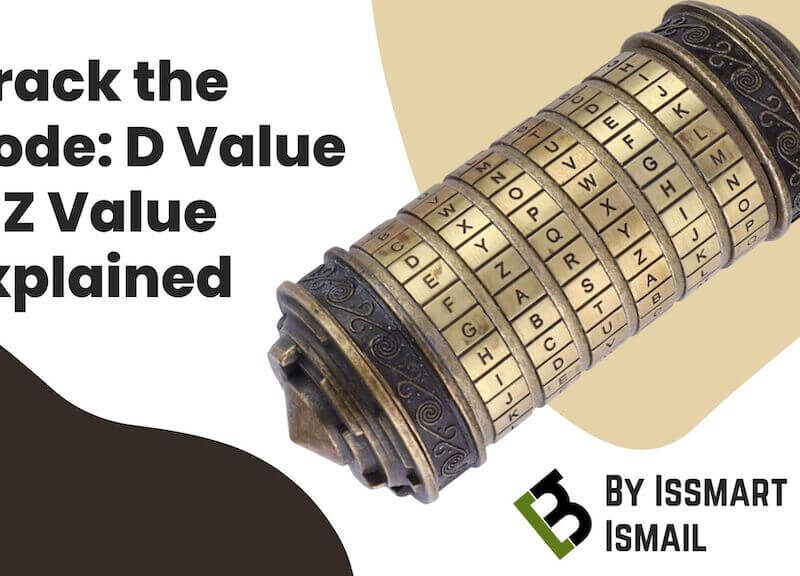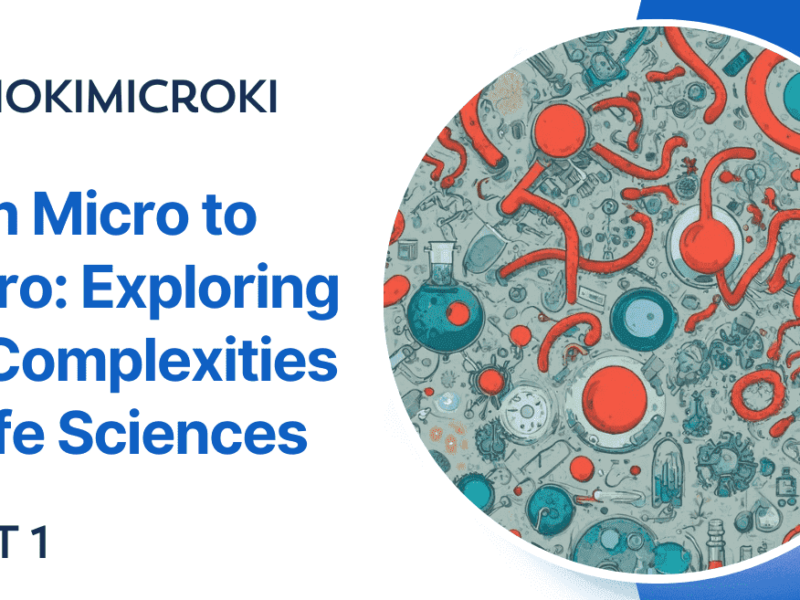Endosymbiosis explains the origin of chloroplast and mitochondria.
The life was initiated on earth, around 3.5 billion years ago. The first life form was a single cell. According to the Modern abiogenesis theory of evolution studies and Miller-Urey experiment, the earliest life form was arose from organic compounds (non-living matter). The lipid molecule formed the double layer bubble and took the organic matter inside. The organic compounds gradually formed the biomolecules and other building blocks of life. The combination and chemical reactions of biomolecules led to develop biochemical and molecular pathways like replication, formation, assembly and catalysis. Development of these process and life took millions of years.
The ancient life form was unicellular and prokaryotic. They were simple, and they lacked nucleus. Their genetic material floats in the cytoplasm of the cell. The ancient form of life diversified into different forms of life. Single cell evolved to different types of single cells. Few of those single cells aggregated or joined together to form multicellular organisms. This theory is called as symbiosis (sym – together and bios – life) theory, where series of symbiotic events occurred and resulted in different lineage of cells. The multicellular organisms are complex and have nucleus. Their genetic material is present inside the nucleus. The eukaryotic organisms have additional organelle like mitochondria and chloroplast. Endosymbiotic theory explains the evolution of mitochondria and chloroplast in eukaryotic cell. It also indicates that we all have formed from common ancestor.
This theory was first proposed in 1905 by Konstantin Mereschkowsky, a Russian biologist in his article “The nature and origin of chromatophores in the plant kingdom”. Where he proposed that plastid or chloroplast in not an organelle but it is unicellular algae which is living symbiotically with the host. And his this theory was inspired from lichens which is the symbiotic relationship of fungi and algae. He had also followed the work of botanist, Andreas Schimper. In 1883, Andreas Schimper observed that the chloroplast divide just like binary fission of bacteria. The concept of endosymbiosis was more elaborated by Lynn Margulis, an American biologist. She published her observation and hypothesis in 1967 in an article “On the origin of Mitosing cells’.
The mitochondria and chloroplast both carries their own genetic material. and it is circular in shape just like bacteria. They carry very few genes and they are specific for the organelle function. In sexual reproduction, the mitochondria and chloroplast are inherited from maternal side.
How eukaryotic cell got their mitochondria via endosymbiosis?
The mitochondria is called as power house of the cell. It produces energy which is utilized to carry out the metabolic and molecular pathway. The Scientists speculate that an ancestral eukaryotic cell might have engulfed a prokaryotic cell (proteobacter). As the prokaryotic cell lived inside the eukaryotic cell, such symbiotic relation is called as endosymbiosis. As such engulfment or internalization occurred for the first time, it is called as primary endosymbiosis. After the engulfment, internalized cell and host did not kill each other rather they thrived with each other. The host provided safe environment and in return, the internalized cell provided energy. They mutually benefited with each other. With due time, the internalized cell became an organelle. And now they cannot exist without each other. This internalized cell is now what we call as mitochondria.
How Plants or Algae got their Chloroplast?
The plants carry out photosynthesis with the help of the chlorophyll pigment present in the chloroplast. The chloroplast has its own DNA and it contains genes for proteins, rRNA and tRNA specifically for photosynthesis. When the rRNA of chloroplast was studied, it was found to be similar to the rRNA of photosynthetic bacteria. This observation indicates that the ancestral eukaryotic cell carrying mitochondria might have engulfed the photosynthetic bacteria. As the photosynthetic bacteria lived symbiotically inside the host cell, it is called as Secondary endosymbiosis. In this relation, both the organisms adapt in order to live symbiotically. Such secondary endosymbiosis developed algae. The chloroplast is bordered by two membranes, the one is derived from engulfed cyanobacteria and other is from ancestral eukaryotic cell. Hence, the chloroplast is younger than mitochondria. When eukaryotic cells carrying mitochondria and cyanobacteria lived together as a colony, it resulted in formation of multicellular organism i.e. plant.
With evolution, the photosynthetic bacteria became an organelle of the host and lost its many genes which were unnecessary. Those genes which were necessary for life but not for photosynthesis were transferred to nuclear DNA. And carried only those genes that are required for photosynthesis. The research has found that around 1000 of such essential genes of photosynthetic bacteria have been transferred to plant nuclear DNA.

What Evidence Supports Endosymbiotic Theory?
Scientists have found that bacteria and eukaryotic organelles (mitochondria and chloroplasts) have similar characteristics to bacteria –
- The mitochondria and chloroplast have their own single circular DNA just like bacterial DNA. The organelle genetic material was first observed in 1950s. When scientist observed the genes and compared they found it similar to bacteria.
- If eukaryotic cell loses its organelle, its nuclear DNA do not have backup of its organelle DNA. And hence, it cannot remake the organelle. This indicate that the organelle has came from outside the cell.
- Both the organelle have the ability to reproduce by their own just like binary fission of bacteria.
- The chemical composition of mitochondrial and chloroplast membrane is found to be similar to bacterial cytoplasmic membrane. They both have porins and cardiolipin in their membrane.
Based on the observation, though we have accepted the endosymbiosis theory but we are still not aware about the timeline of these events. And how much time it has taken to develop the organelle. We still need to find the molecular and evolutionary mechanism that led to endosymbiosis. But still the theory has been accepted globally after the sequencing of cpDNAs and mtDNAs (chloroplast and mitochondrial DNA).
The mystery of evolution of other eukaryotic organelles like endoplasmic reticulum, golgi apparatus, lysosomes and cytoskeleton is not resolved. Our scientists are still trying to decode it. These organelles might have develop during the evolution or might have resulted because of ancient endosymbiotic events.
References –
https://askabiologist.asu.edu/explore/cells-living-in-cells
https://www.ncbi.nlm.nih.gov/pmc/articles/PMC5426843/
https://www.biooekonomie-bw.de/en/articles/news/symbiogenesis-of-mitochondria-and-plastids
Dr. Sangha Bijekar has 9 years of Teaching Experience at University level. She loves to get engage in teaching and learning process. She is into blogging from last two years. She intends to provide student friendly reading material. She is avid Dog Lover and animal rescuer. She is learned Bharatnatyam and Katthak Dancer. She is into biking and She also loves to cook.



One of the strongest practical pieces of physical evidence for endosymbiotic theory is a very interesting fact. If you incubate seeds with antibiotics (e.g. streptomycin or spectromycin) you can kill off the chloroplasts and get either variegated or albino plants as a result (the albinos will die unless supplemented with certain food, and grown in vitro). So, anti-bacterials can still kill them!
Thankfully, they do not appear to target mitochondria, also. Otherwise we would sure be in trouble.